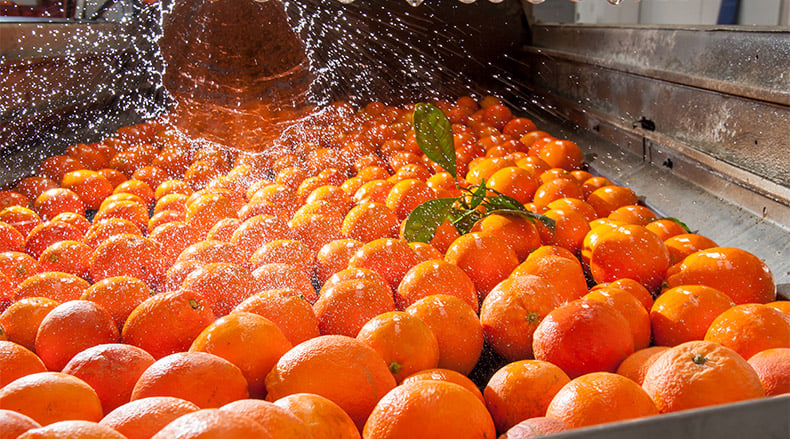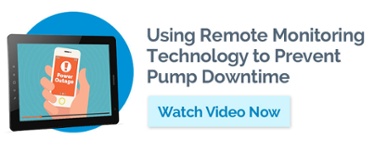
Food processing plants require large amounts of water for multiple activities, including washing, rinsing, cooking, disinfecting, bottling, canning and packaging. Incoming water must be treated to ensure safety and quality before it comes into contact with food products. And wastewater generated from food production must be treated before it is used or discharged.
Food processing wastewater can contain high quantities of contaminants. Because of this, federal, state and local regulations require food processing facilities to treat the wastewater before it is discharged. However, wastewater treatment poses many challenges for food processors.
For instance, if wastewater treatment systems are left unattended and the equipment malfunctions, it could be some time before someone realizes the system failed. This could result in releasing untreated water, contaminating the environment, and receiving fines and citations from regulators as well as public scorn. To prevent these issues, many food processors are using remote monitoring technology to learn about equipment problems before they become serious.
Early Notification and Predictive Maintenance
Remote monitoring of wastewater treatment plant equipment is a low-cost way to provide immediate notification of potential malfunctions that can lead to breakdowns. Modern pumping systems typically include alarms that alert operators when a malfunction occurs. However, remote monitoring systems also offer data logging functionality and are available with a variety of different sensors. This enables you to perform predictive maintenance, prevent unscheduled shutdowns and optimize the best efficiency point of the pumps and components.
For example, many different operating conditions reduce the lifespan of a pump. A clogged intake, suction loss or cavitation can stress components of the pump and cause it to fail prematurely. Bearing wear, deadheading, dry pumps and impeller jams can cause early motor and pump failure. If a pump stops and no one notices right away, the malfunction can damage other equipment and send untreated water into the facility and the surrounding environment. Receiving an alert from a monitoring system as soon as possible can save a lot of time and money in clean-up costs and production downtime.
Advanced monitoring systems can easily interface with any wastewater processing equipment that uses a programmable logic controller (PLC) with Modbus sensors. The monitoring system directly interfaces to the PLC over Modbus, so you can access sensor status data in real time. It also sends an alert to designated personnel when sensor readings move out of the normal parameters.
Real-Time Equipment Status Updates
Cloud-based technology lets users check critical conditions from anywhere in real time from a mobile device, tablet or computer. You can view the status of multiple water and wastewater locations, access pump run-time and flow reports, check specific equipment status and review alarm history. No software is required, so installation, integration and management are easy. Monitoring systems also log data automatically, so you can analyze trends in equipment and environmental conditions and improve performance system-wide.
Providers of advanced monitoring systems use private cloud services that are not shared with the public. These providers monitor the cloud platform around the clock and have multiple backup server sites across the country to ensure the system is never down.
Sensors
When choosing a remote monitoring system, it is important to consider what sensors you will need for your facility. Be sure to look for a system that can monitor Modbus data registers as well as support several digital or analog sensor inputs. This enables you to cast a wide monitoring safety net.
The right sensors for your facility will depend on a few different factors:
- The conditions the user wants to monitor
- How many base units are in use
- How many sensors each unit can handle
Typical conditions to monitor include tank levels, pump status, flow rate, turbidity, temperature, humidity, water leaks, vibration, pressure, run times, power and voltage.
Data Acquisition
As mentioned above, remote monitoring systems can also function as data loggers. These systems automatically record tens of thousands of data points, dates and times. This can be essential when you need to run reports for internal review or to prove compliance with regulations. Data is automatically stored in a remote location and can be accessed at any time on any Internet-connected device.
Operators can also configure flow meters with multipliers to determine how much flow a station is outputting. These values can be recorded and archived, so operators can create monthly and yearly reports. Important run times to include for data measurements include the total hours a pump has worked, how much accumulated time it has operated per day and work cycles on pumps.
Other reports like alarm logs can be useful for determining how much time the site was offline and when it came back online.
With food processing plants using millions of gallons of water every day, it’s critical to have a system in place to ensure your water treatment equipment is running as efficiently as possible. Remote monitoring systems are an extremely cost-effective way to achieve an extra layer of protection for your facility and inventory. For more information or help finding the right solution for your facility, contact a Sensaphone expert today.








